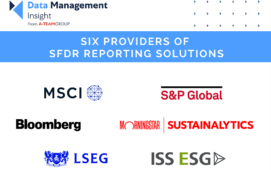Following the appointment of Tom Abraham as CEO last year, investment management solution vendor DST International (DSTi) has refocused its attention on the area of the middle office within asset management firms. Steve Cheng, head of solution, Investment Control at DSTi, explains to Reference Data Review the details of the vendor’s recent research and its plans for the derivatives middle office space.
“We had a change in CEO around 18 months ago and we have been looking for growth areas in our market space, which is buy side firms,” Cheng explains. “We have identified a gap in the middle office, as many firms seem to be either targeting the back or the front office spaces. With regards to the middle office, the area that needs the most work is the area of OTC derivatives and that is why we have decided to focus in that space.”
To this end, the vendor has recently produced a white paper on the subject of OTC derivatives and the middle office, dubbed “Shifting the Balance of Power”. The paper argues that the new order emerging from recent market turmoil presents an opportunity for the middle office to take centre stage in asset management firms.
The key driver for this is the continuing need to seek alpha from OTC derivatives, says Cheng: “The area of OTC derivatives in particular has been overlooked as an area for middle automation thus far because there has been slow growth in volumes. Even large funds might only be doing one or two derivatives trades a day, for example. However, these firms will start using more of these instruments as time goes on, as they are a quick way to gain alpha in a difficult market.”
The white paper cites a November 2008 report from the Bank for International Settlements (BIS) that highlights this trend, showing that notional amounts of outstanding OTC derivatives increased in the first six months of the year by 15% compared to the previous six months. Interest rate products grew by 17% and commodity derivatives by 56%.
“Although asset managers can cope using spreadsheets and manual processes at the moment, at some point this will be too expensive with regards to headcount,” adds Cheng. The white paper suggests that firms face a far greater risk from systems failing to cope with complexity than from poor investment decisions or the actions of rogue traders. The fact that the handling of OTC derivatives is often managed by a mishmash of systems fed by data from disparate sources is proof, says the paper, that this will emerge as a new area of focus in the market. Accordingly, emerging awareness of the operational risks associated with OTC derivatives, coupled with increasing volumes will drive growth in IT spend, it claims.
“The current market uncertainty, as well as regulations such as MiFID, has led to an increased requirement for transparency and this has led to investment in middle office systems,” says Cheng. “A lack of capacity in a middle office system can hinder an asset manager’s growth, especially with regards to OTC derivatives, as they cannot be as innovative as they would wish to be in building new investment products.”
The white paper quotes Chris Sier, director of Alpha Financial Markets Consulting, to highlight the increase in spend within the middle office: “Between 2006-2007, IT spend on the derivative middle office by Alpha FMC’s asset manager benchmarking clients increased by over 70%. Early indications from our 2008 data show that this trend has continued and we expect this to carry on in 2009.”
DSTi calls for a collaborative approach from investment management firms, systems vendors and their partners in the white paper. If the industry achieves common standards for OTC derivatives, particularly in the area of data, then the door is open for an ‘ideal’ middle office approach to these instruments that is centred on the contract, it contends.
According to Cheng, the current market conditions have driven the vendor to build a solution that is scalable so that users can pay by usage rather than be forced to take a big bang approach. “Some of our competitors coming from the sell side market have systems that must be bought in whole for millions of pounds but our system is built on a subscription basis. You can start small and grow,” he explains.
Cheng reckons there is real pain point in the middle office that is poorly served by the existing vendor offerings in the market. He claims that the competition has merely strapped on functionality moving from the front or the back office towards the middle. “The competition are starting from what they have and bolting things on, such as the traditional buy side accounting system vendors built for equities and fixed income are bolting on functionality for other instruments. This will also involve existing customers taking an upgrade to the software, which is costly and can take months to implement. They are at a disadvantage because they have to adapt what they have,” he contends.
“Many of the other new entrants were originally designed for banks and they were focused on scale and don’t understand the nuances of the asset management process, for example the reporting processes required,” he continues.
The vendor has just started development for its new middle office offering with the aim of getting the first phase completed next year, he says. This first phase will focus on the most commonly traded instruments such as interest rate swaps and credit default swaps. “We will also add templates to add in other instruments to the system as customers request them. We will therefore layer on additional instrument coverage as it is needed, which under the current market may be more appealing than being forced to engage in major upgrades with the associated costs involved,” Cheng elaborates.
Subscribe to our newsletter




